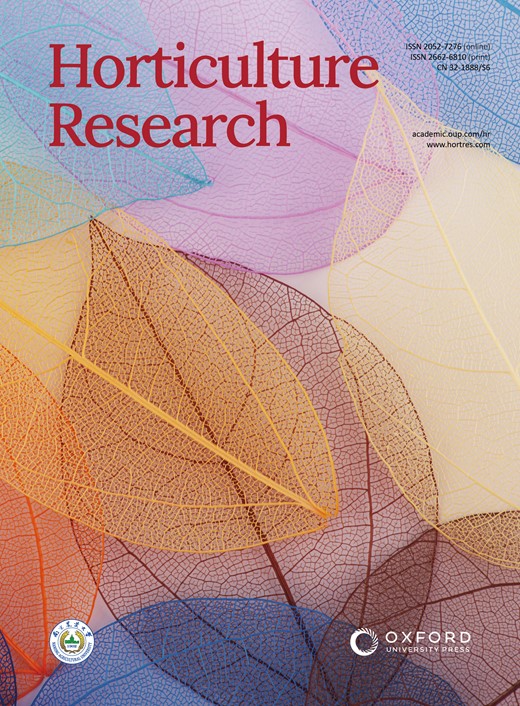Morphological and Genetic Characterization of the Muscadine Fruit Abscission Zone
IF 8.7
1区 农林科学
Q1 Agricultural and Biological Sciences
引用次数: 0
Abstract
Muscadines face limitations to fresh market production due to high manual labor costs. Mechanical harvesting holds promise for reducing the costs associated with muscadine production but requires cultivars with easily detached fruit at maturity. This study aimed to determine muscadine fruit and pedicel characteristics influencing fruit detachment force and to unravel the genes, hormones, and regulatory networks governing muscadine abscission. We characterized the fruit detachment force of muscadine fruit across eighteen genotypes and at four developmental stages. Following this, we performed a transcriptome analysis using the mature pedicel tissue of two genotypes, a genotype with high fruit detachment force at maturity and a genotype with low fruit detachment force at maturity, to identify differentially expressed and uniquely expressed genes contributing to fruit detachment. We found that pedicel length, pedicel-fruit junction area, and fruit diameter positively correlated with fruit detachment force. This study also identifies novel candidate genes, transcription factor families, and pathways associated with muscadine fruit abscission. These findings provide valuable knowledge on the progression of fruit abscission and insights for reducing fruit detachment force, particularly in developing machine-harvestable muscadine cultivars and fostering sustainability and efficiency in muscadine production.麝香葡萄果实脱落区的形态和遗传特征
由于人工成本高昂,麝香葡萄的新鲜上市受到限制。机械采收有望降低麝香葡萄生产的相关成本,但要求栽培品种的果实在成熟时易于脱落。本研究旨在确定影响果实脱落力的麝香葡萄果实和花梗特征,并揭示支配麝香葡萄脱落的基因、激素和调控网络。我们对 18 个基因型和 4 个发育阶段的麝香葡萄果实脱落力进行了表征。随后,我们利用两个基因型(成熟时果实脱落力大的基因型和成熟时果实脱落力小的基因型)的成熟花梗组织进行了转录组分析,以确定导致果实脱落的差异表达基因和独特表达基因。我们发现,花梗长度、花梗-果实交界处面积和果实直径与果实脱落力呈正相关。这项研究还发现了与麝香葡萄果实脱落相关的新型候选基因、转录因子家族和途径。这些发现提供了有关果实脱落过程的宝贵知识,以及减少果实脱落力的见解,特别是在开发可机采的麝香葡萄栽培品种和促进麝香葡萄生产的可持续性和效率方面。
本文章由计算机程序翻译,如有差异,请以英文原文为准。
求助全文
约1分钟内获得全文
求助全文
来源期刊

Horticulture Research
Biochemistry, Genetics and Molecular Biology-Biochemistry
CiteScore
11.20
自引率
6.90%
发文量
367
审稿时长
20 weeks
期刊介绍:
Horticulture Research, an open access journal affiliated with Nanjing Agricultural University, has achieved the prestigious ranking of number one in the Horticulture category of the Journal Citation Reports ™ from Clarivate, 2022. As a leading publication in the field, the journal is dedicated to disseminating original research articles, comprehensive reviews, insightful perspectives, thought-provoking comments, and valuable correspondence articles and letters to the editor. Its scope encompasses all vital aspects of horticultural plants and disciplines, such as biotechnology, breeding, cellular and molecular biology, evolution, genetics, inter-species interactions, physiology, and the origination and domestication of crops.
 求助内容:
求助内容: 应助结果提醒方式:
应助结果提醒方式:


